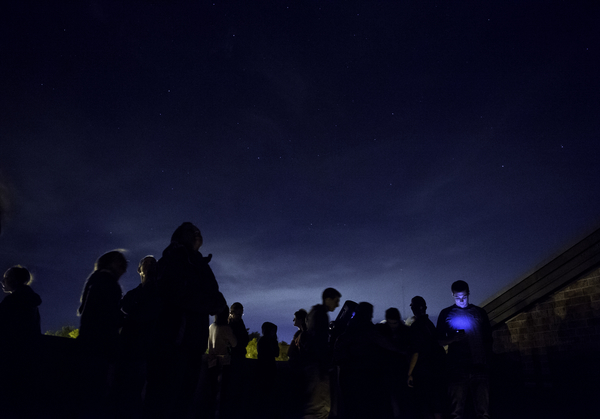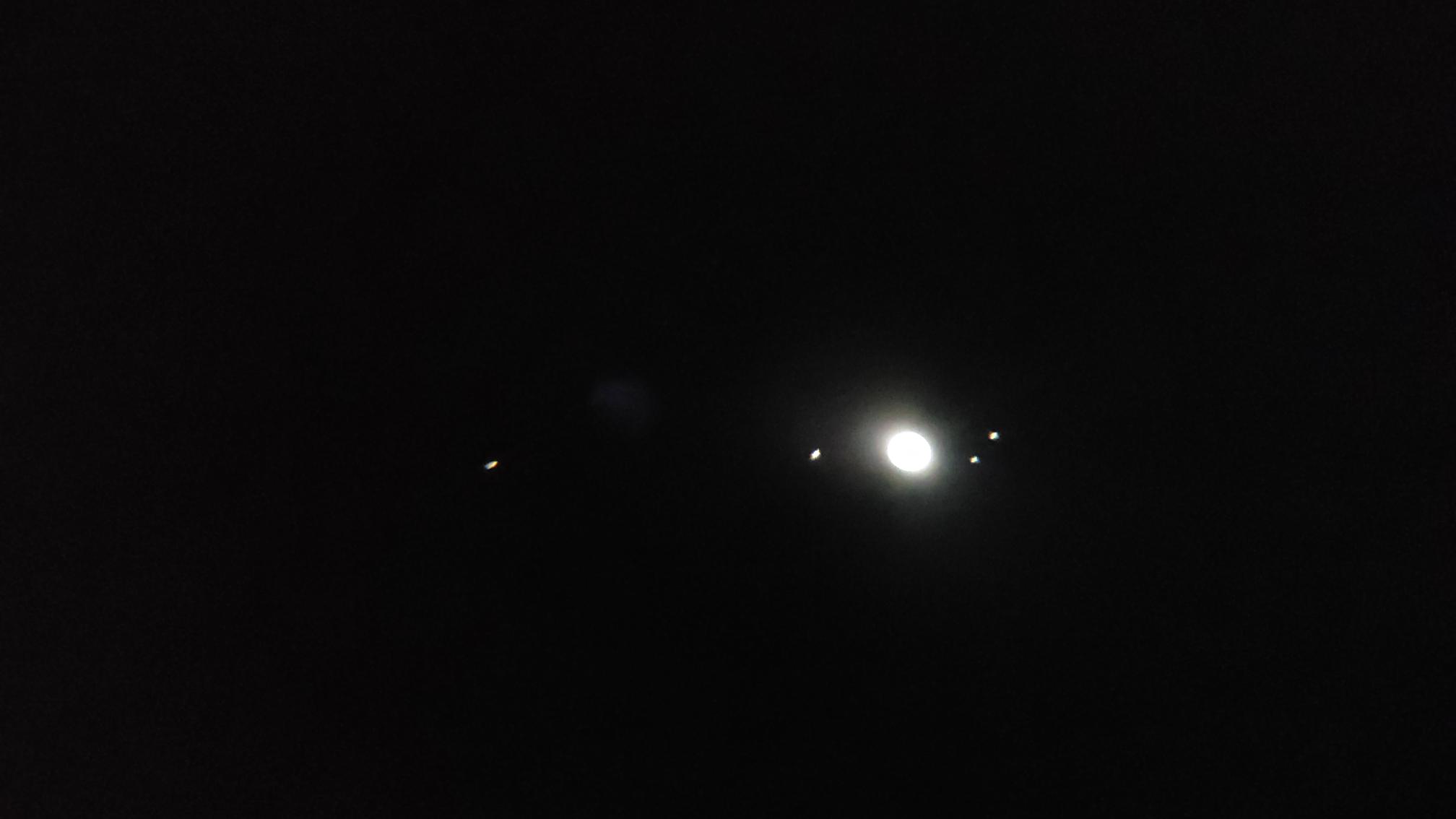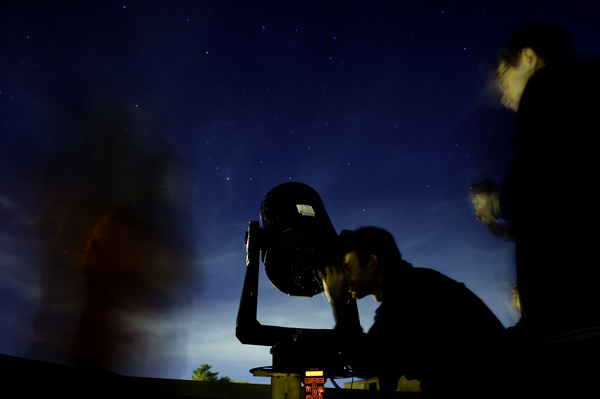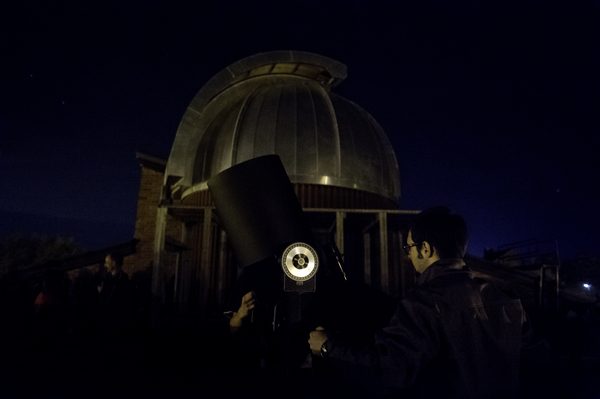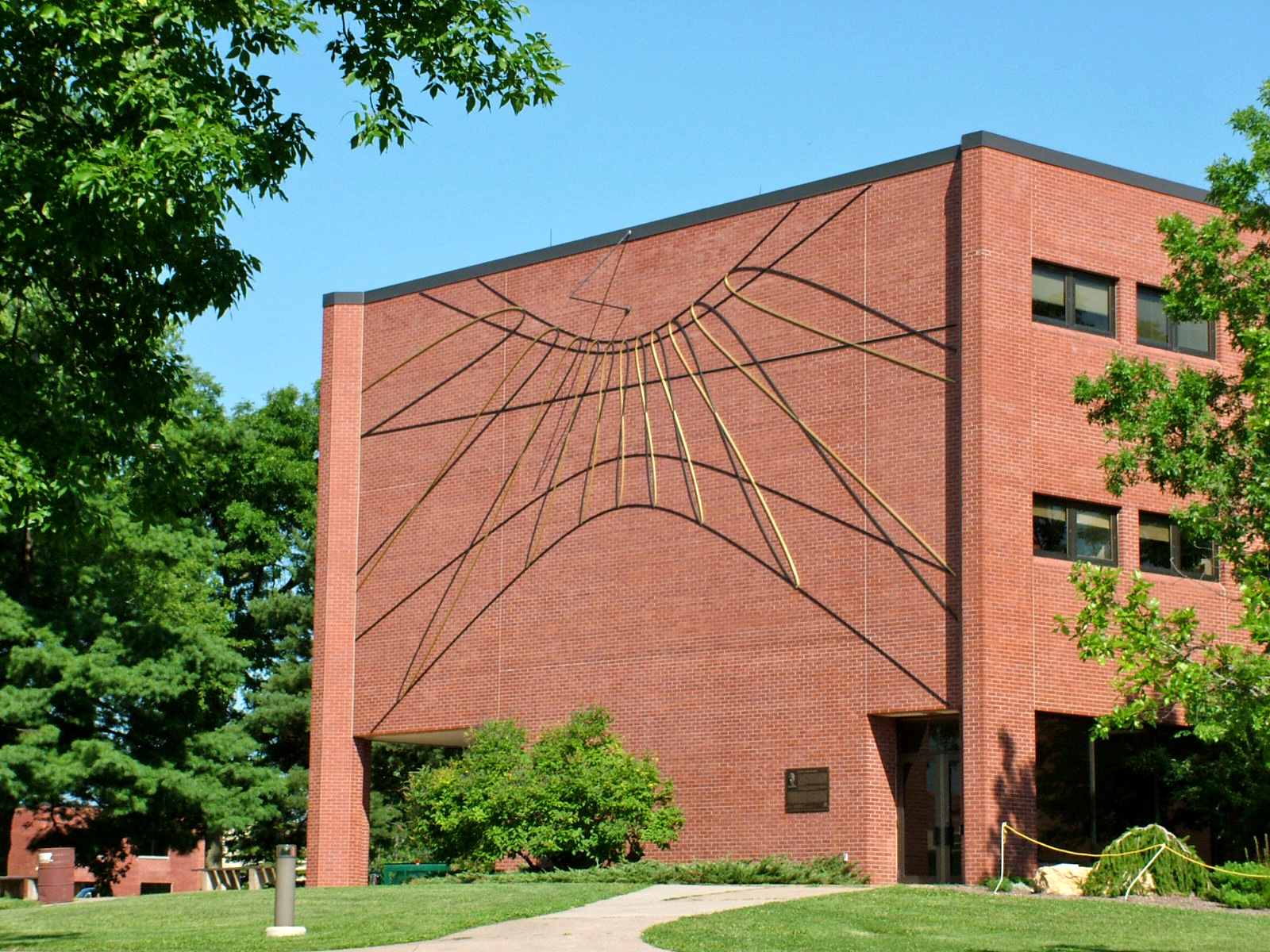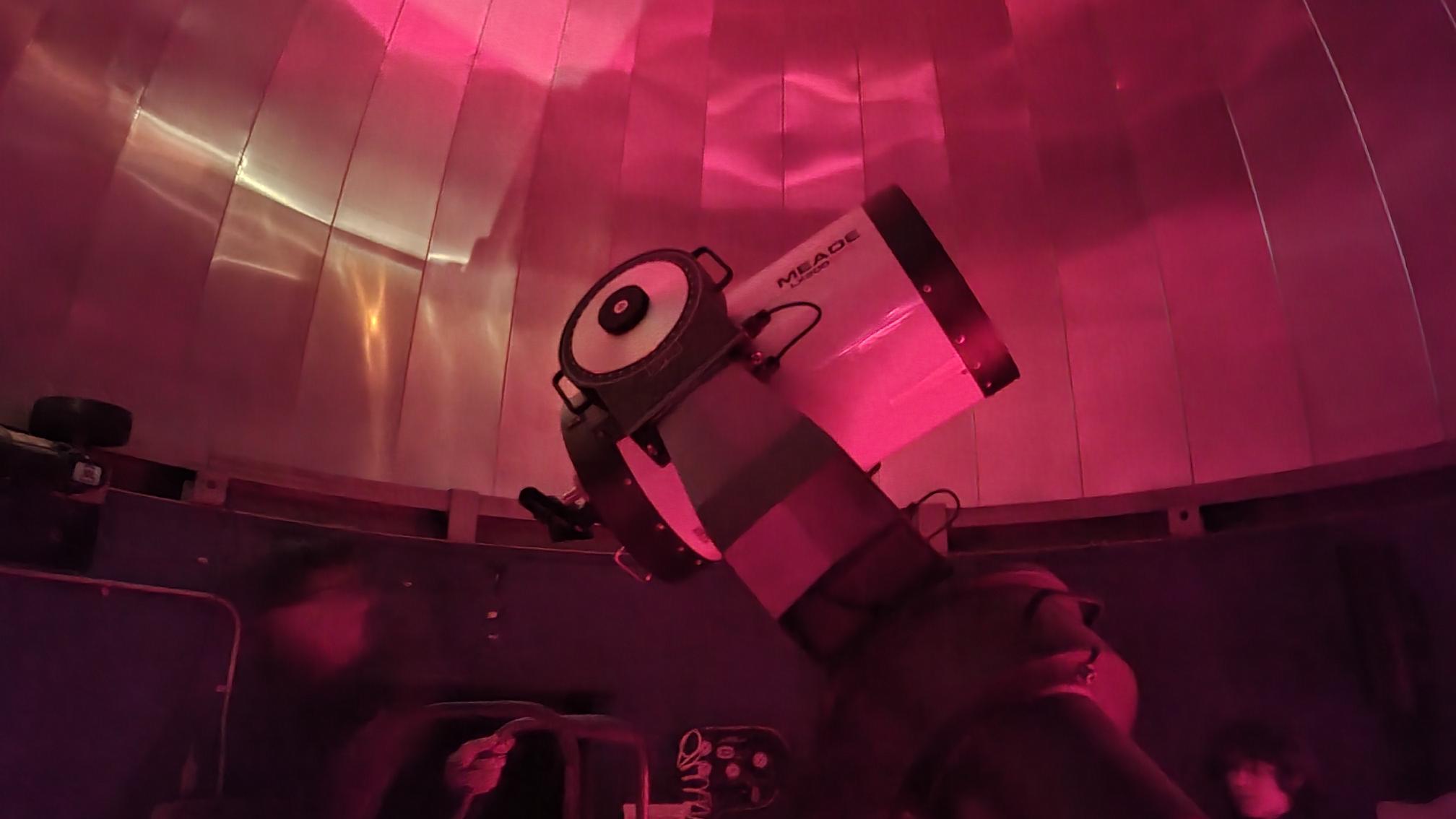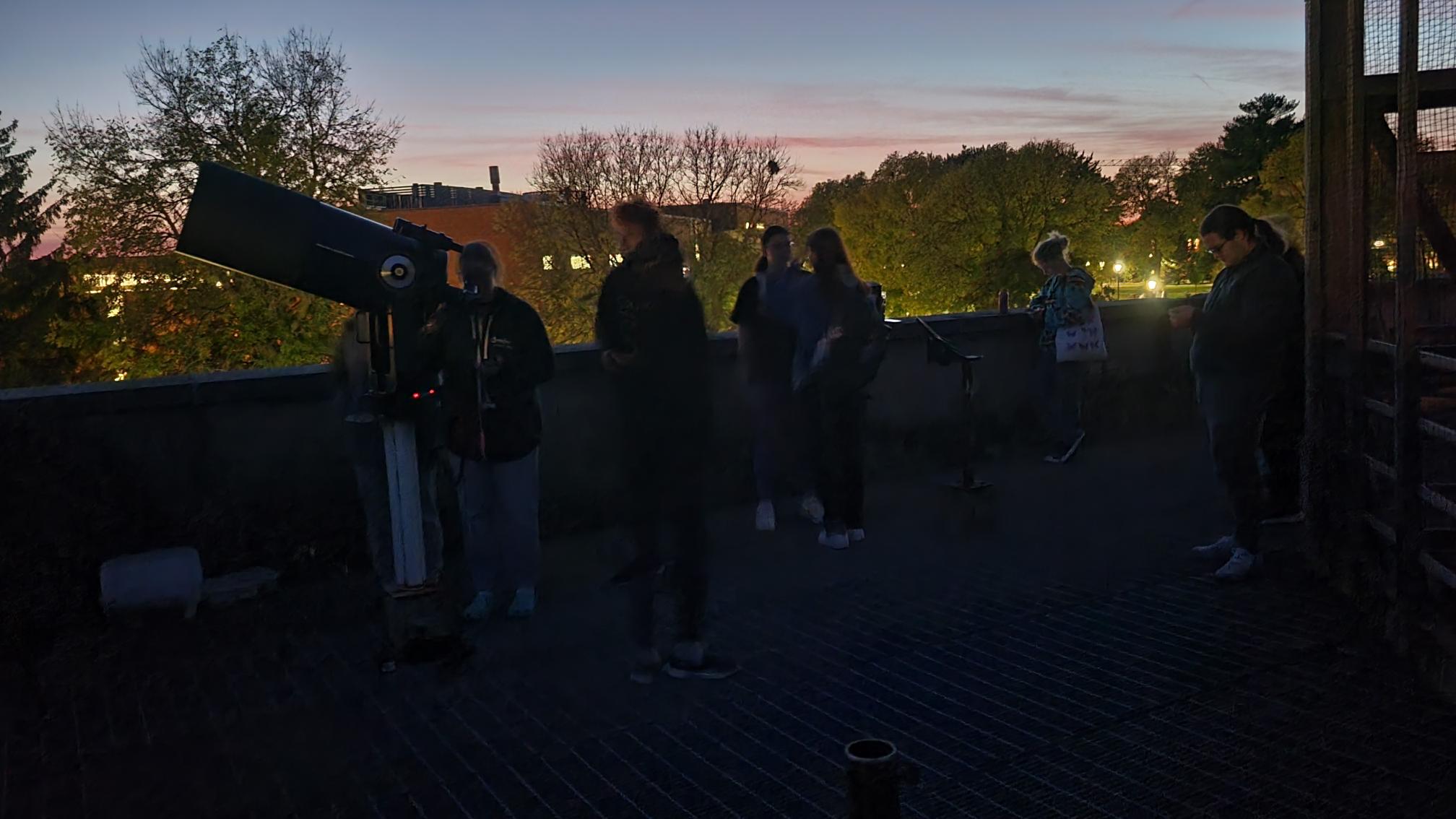UNIVERSITY OF WISCONSIN River Falls
Physics
Observatory, Planetarium, and Sundial
Astronomy Talks and Viewings
Partial (75%) Solar Eclipse: Monday, Apr 8, start 12:48, max 2:02, end 3:14 p.m.
At maximum the Moon will block 3/4 of the Sun. We'll have naked-eye solar-safe viewing glasses available along with multiple telescopes and binoculars with solar filters to enable safe close-up views from the area around the UWRF Observatory.
The next scheduled Telescope session is: Thursday, Apr 4, 8:30-10:00 p.m.
A moonless sky will allow for a better view of gaseous nebulae, globular and open star clusters, and galaxies beyond our Milky Way.
The full Moon was bright but Jupiter and its Galilean moons were prominent, Pleiades, and lots more!
Saturn and Jupiter were the highlights!
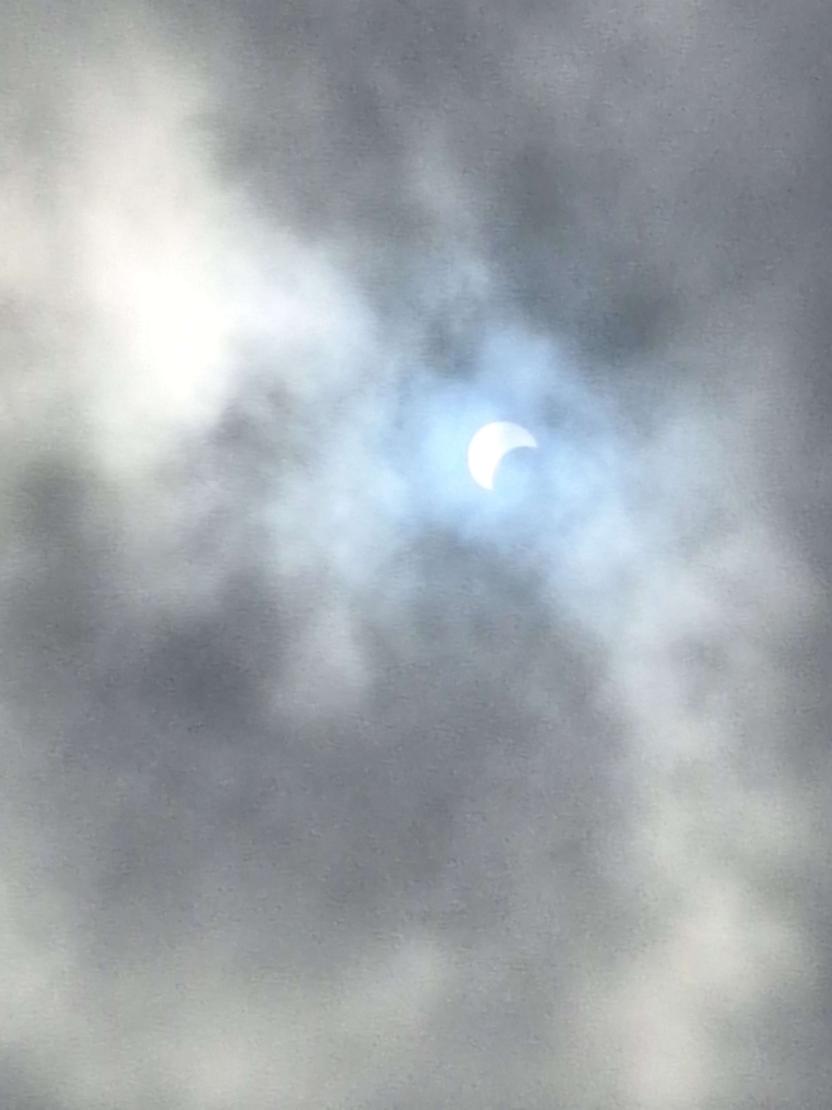
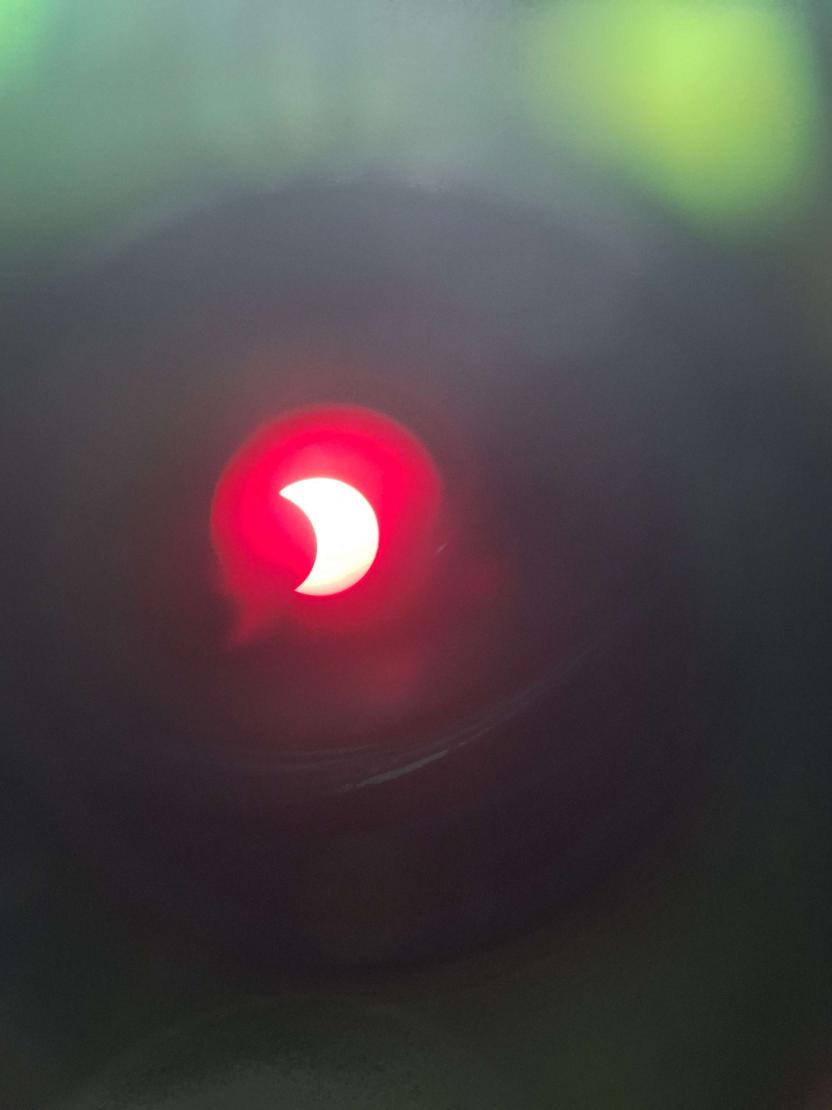
Open Sky and Telescopic Views of the Oct 14, 2023, Partial Solar Eclipse Observation Event (above)
The UWRF Observatory is located on the third floor of Centennial Science Hall (CSH) - south stairwell, 511 S. 6th St. Observatory viewings and talks are free and open to all age groups. Objects to be seen include planets, globular clusters, open clusters, nebulae, galaxies, moons, and double star systems.
If there is a presentation scheduled, it will be held in CSH room 271 before viewing begins. If the night is clear, all are welcome to come up to the observatory immediately afterward.
Check this page after 6 p.m. for any weather updates in case skies are not conducive to viewing, or call 715-425-4630. If in doubt, use your own judgement and check weather.com. If inclement weather precludes viewing, the talk will always be held if there is a talk scheduled.
If you need assistance or elevator access to the third floor of Centennial Science Hall, please let us know so that we can key the elevator for Observatory level access. If the elevator is not functional we will assist you to the observatory, if needed!
Clear Sky Chart
(opens in a new window)
Explore our recommended stargazing websites for more information.
Please contact Glenn Spiczak if you would like to be added to the stargazers email list or have any cosmic questions about what we see (or don't see, for dark matter or dark energy) in our amazing universe.
Digital-Dome Planetarium Shows:
Shows have resumed starting Fall 2023! Thank you for your patience. If your school or organization would like a show please contact Glenn Spiczak with a wide range of possible days and times that can work. We can support roughly 1-2 shows per week so the sooner you schedule the more likely we'll be able to find a spot.
Telescopes:
The Observatory is equipped with a 16-inch Meade computer-controlled LX200GPS mounted under the dome, three portable telescopes (two 12-inch Meade LX200 and one 18-inch Obsession Dobsonian), Coronado SolarMax60 and PST Solar Telescopes. UWRF also has two parallel RadioJOVE telescopes (currently awaiting a new location), and a number of QuarkNet cosmic ray air shower detectors.
Sundial:
The Richard D. Swensen sundial in the center of campus (on the south side of the Kleinpell Fine Arts building, visible as you walk out of the north doors of the University Center) is one of the most accurate in North America!
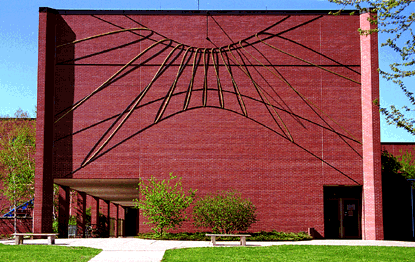
Richard D. Swensen Sundial
The sundial on the Kleinpell Fine Arts (KFA) building was designed by faculty emeriti John Shepherd. Find it on the outside south wall of KFA, located on Cascade Avenue just west of Centennial Science Hall. It faces the University Center (UC) along the main east-west walkway through the center of campus.
A history and directions for reading the sundial are available at How to Read Sundial.







